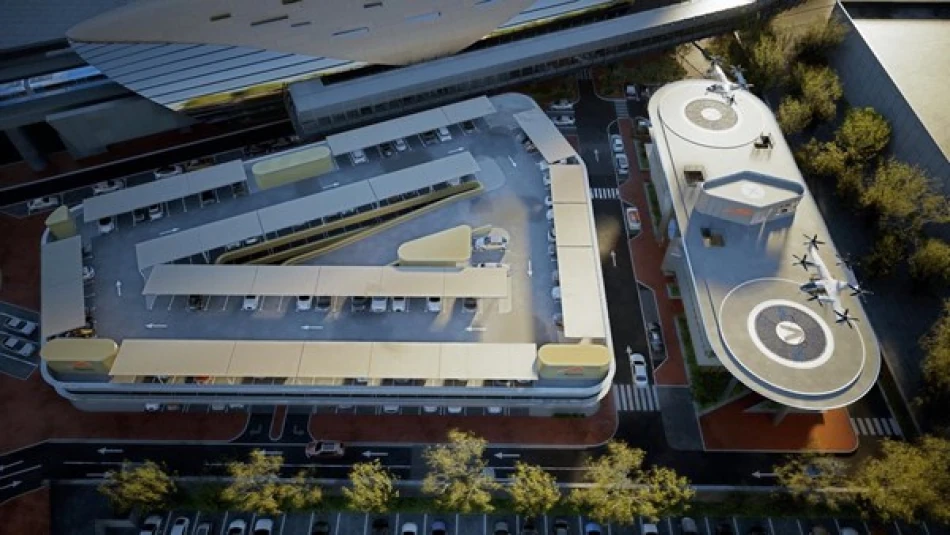
UAE Prepares for the Future of Advanced Air Mobility: A Comprehensive Approach
The UAE is positioning itself as a global leader in urban air mobility, becoming the first country to create comprehensive regulations for flying taxis and electric aircraft while managing over one million flight movements annually. With air taxi services set to launch by 2026, the Emirates is building the infrastructure and legal framework for a future where drones, helicopters, and electric vertical aircraft share the same airspace.
The UAE's aviation sector is already one of the busiest in the Middle East. The country recorded more than one million air movements in 2024, with a fleet of around 960 registered aircraft. National carriers operate 520 of these planes, running over 4,800 international flights weekly that connect the Emirates to cities worldwide.
But here's what makes this interesting: the UAE isn't just managing traditional aviation. They're preparing for a completely new type of air traffic. Soon, the skies will include air taxis, electric aircraft, vertical takeoff and landing vehicles (eVTOLs), and drones operating at lower altitudes as part of Advanced Air Mobility systems.
The UAE General Civil Aviation Authority took a bold step in March 2023 by issuing the world's first regulatory framework for vertiports. These are specialized landing pads for vertical aircraft, complete with safety standards, design requirements, and operational guidelines. In 2025, they went further by creating the first global framework for hybrid operations, allowing both eVTOLs and traditional helicopters to use the same infrastructure.
This regulatory approach matters because it solves a major problem other countries are struggling with. How do you safely integrate new types of aircraft into existing air traffic systems? The UAE's answer is to create clear rules upfront rather than trying to adapt later.
The infrastructure development is moving fast. The country currently operates more than 100 registered helicopter landing pads, and many of these will be gradually converted into hybrid facilities that can handle both helicopters and electric aircraft. This makes economic sense because it uses existing infrastructure rather than building everything from scratch.
Abu Dhabi launched the first clean energy-powered vertiport in April 2024. Dubai is building an even larger facility covering 3,100 square meters, designed to handle 170,000 passengers annually. This facility will have two landing pads and fast-charging stations, capable of supporting 10 vertical takeoff and landing operations per hour.
Additional vertiports are planned for high-traffic locations including Palm Jumeirah, Downtown Dubai, and Dubai Marina. The goal is to have air taxi services operational by 2026, which would make the UAE one of the first countries to offer commercial urban air mobility on a significant scale.
At lower altitudes, drone operations are expanding rapidly. The UAE has registered more than 23,000 drones, all managed through a unified national platform that handles registration, permits, and safety requirements. These drones are expected to play major roles in logistics, emergency response, and cargo delivery.
For investors and aviation companies, this represents a significant opportunity. The UAE is essentially creating a testing ground and regulatory model that other countries will likely follow. Companies that establish operations there now could have first-mover advantages as the technology spreads globally.
The economic implications are substantial. Urban air mobility could reduce traffic congestion, speed up emergency services, and create entirely new transportation options for both people and goods. The UAE's early investment in infrastructure and regulations positions it to capture much of the economic value from these emerging technologies.
This approach reflects the UAE's broader strategy of embracing innovation while maintaining strict safety standards. By developing comprehensive regulations before the technology becomes widespread, they're avoiding the regulatory scrambling that often happens when new technologies disrupt established industries.
Most Viewed News

 Layla Al Mansoori
Layla Al Mansoori






